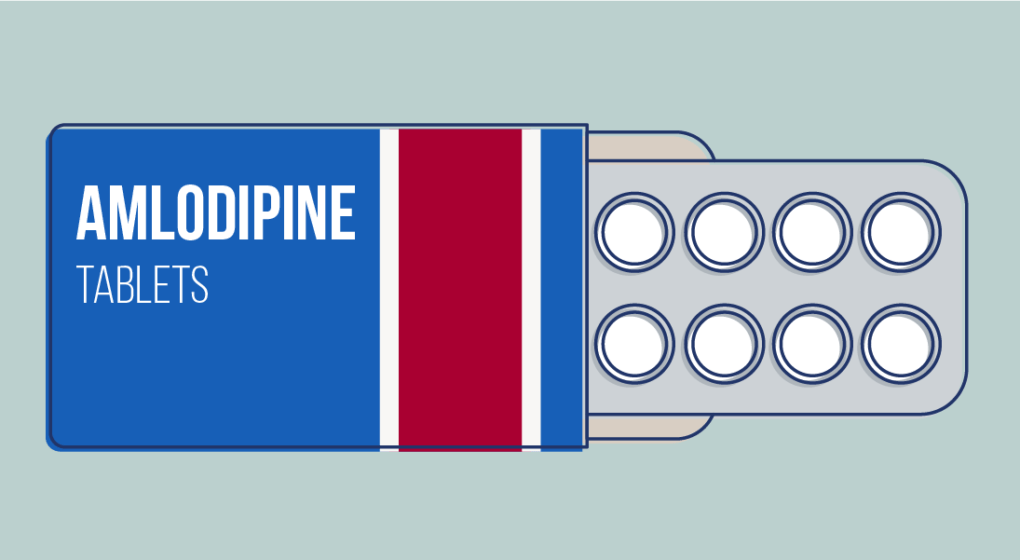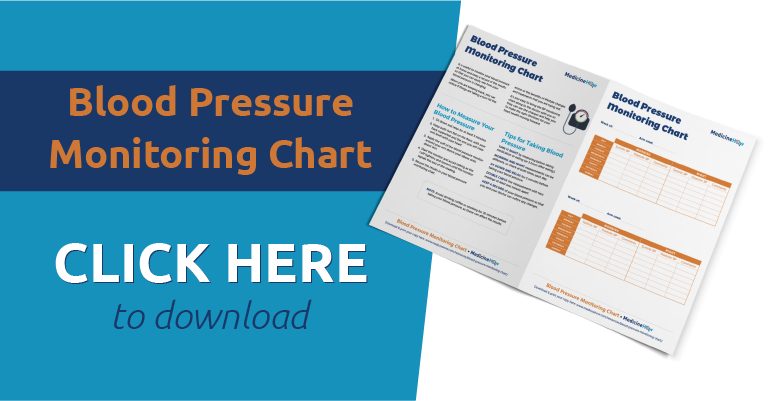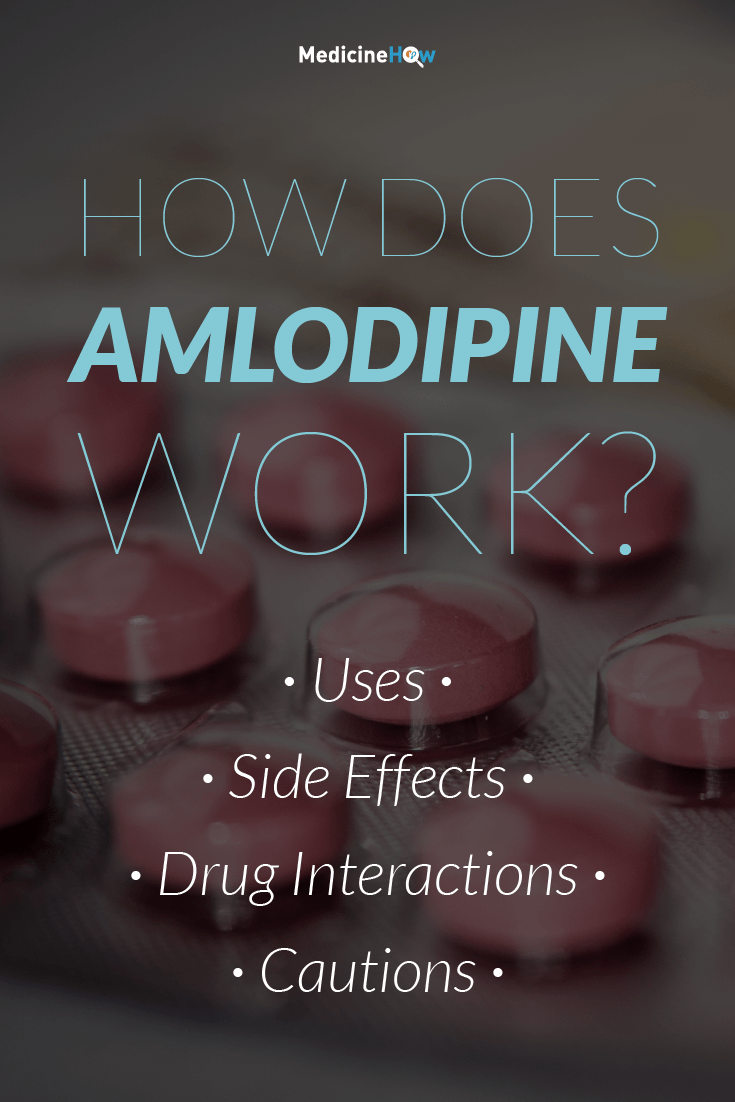
Amlodipine is a type of drug called a calcium channel blocker, which works to reduce blood pressure by relaxing the muscles around the blood vessels. If you or someone you know is taking amlodipine and you’d like to know more about how it works, let’s take a closer look.
Brand Names and Doses
![]() Amlodipine is the generic name – the name of the actual drug component inside your medication. The brand name written on the packaging might be slightly different. All of these medications contain the same drug and do exactly the same thing – it’s just a marketing thing that their names are different.
Amlodipine is the generic name – the name of the actual drug component inside your medication. The brand name written on the packaging might be slightly different. All of these medications contain the same drug and do exactly the same thing – it’s just a marketing thing that their names are different.
- Amlo
- Nordip
- Norvapine
- Norvasc
- Ozlodip
They each come in several different doses, usually 5 mg and 10 mg. When starting amlodipine medication for the first time, it is best to begin with a low dose, such as half a 5 mg tablet (2.5 mg) and gradually increase the dose and until it is working as it should be. This helps to decrease the risk of any side effects as your body adjusts to the drug.

Drug Combinations
![]() Amlodipine is also available in combination with other drugs in one tablet, when it is commonly needed with certain medications.
Amlodipine is also available in combination with other drugs in one tablet, when it is commonly needed with certain medications.
Each of these combination medications is available in several different doses, so that each individual can find the dose suited for them.
- Amlodipine and Atorvastatin are available together in a product called Caduet.
- Amlodipine and Olmesartan are available together in a product called Sevikar.
- Amlodipine and Perindopril are available together in a product called Reaptan.
- Amlodipine and Telmisartan are available together in a product called Twynsta.
- Amlodipine and Valsartan are available together in a product called Exforge, or with added hydrochlorothiazide called Exforge HCT.
What type of drug is it?
![]() Amlodipine is a type of drug called a dihydropyridine calcium channel blocker. This is a drug class that helps us to group drugs that work in a similar way together. Other drugs in the same class are:
Amlodipine is a type of drug called a dihydropyridine calcium channel blocker. This is a drug class that helps us to group drugs that work in a similar way together. Other drugs in the same class are:
Amlodipine is a special type of calcium channel blocker, called a dihydropyridine calcium channel blocker. This simply means that is has a more profound effect on the blood vessels and less on the heart.
What is Amlodipine used for?
![]() The most common use of amlodipine is for someone with hypertension. This is because it works very well to reduce the blood pressure due to the way it works.
The most common use of amlodipine is for someone with hypertension. This is because it works very well to reduce the blood pressure due to the way it works.
Sometimes it can also be used to help people with angina to prevent future attacks. Usually it is used in combination with a drug to help prevent clots, like aspirin or clopidogrel for this.
How does it work?
![]() Calcium is very important in the body and is needed to allow some muscles to contract. In particular, smooth muscles that you don’t have any conscious control over, like those in your heart and that surround your blood vessels, rely on calcium.
Calcium is very important in the body and is needed to allow some muscles to contract. In particular, smooth muscles that you don’t have any conscious control over, like those in your heart and that surround your blood vessels, rely on calcium.
Calcium channel blockers like amlodipine block the passage of calcium into the cells. What happens when the calcium is blocked? The muscles can’t contract properly.
For someone with hypertension, this is actually a good thing. High blood pressure means there is too much blood pumping around the body too fast, putting a lot of pressure on the heart and the rest of the cardiovascular system.
When calcium is blocked from the smooth muscle surrounding the blood vessels when a drug like amlodipine is taken, the blood vessels relax and expand slightly. This allows the blood to flow through more easily, like putting your hand into a glove the right size, instead of trying to squeeze it into one that is a few sizes too small.
Side Effects
![]() The most common side effects of amlodipine happen because the drug is working too well – instead to high blood pressure, you end up with low blood pressure. Signs of low blood pressure are:
The most common side effects of amlodipine happen because the drug is working too well – instead to high blood pressure, you end up with low blood pressure. Signs of low blood pressure are:
- Headache
- Tiredness
- Dizziness
- Flushing
If you notice these signs, it is likely that the dose of amlodipine is too high. It is best for you to discuss this with you doctor, who will help you to find the right dose.
Amlodipine can also sometimes cause retention of fluid in your body, such as in you ankles making them appear swollen. This is called oedema and also usually means the amlodipine dose is too high – if you notice this, it’s best that you discuss this with your doctor as soon as possible.
Cautions
![]() Amlodipine is supposed to be taken long-term to help you to control your blood pressure. If you stop taking it suddenly, the smooth muscles around your blood vessels will suddenly be able to contract again and will tighten to cause rebound hypertension.
Amlodipine is supposed to be taken long-term to help you to control your blood pressure. If you stop taking it suddenly, the smooth muscles around your blood vessels will suddenly be able to contract again and will tighten to cause rebound hypertension.
Rather than stopping cold turkey, it is best to gradually reduce the dose over time to allow your body time to readjust. If you are currently taking 10mg, your doctor might reduce your dose to 5 mg, then you can take half a 5 mg tablet (2.5 mg) for a some time before stopping completely.
You might also find that amlodipine affects your mental coordination – you might feel more tired than usual and lack alertness. If this happens to you, you should avoid driving or operating heavy machinery as the consequences if you lose concentration could be disastrous.
Special Cases
![]() When amlodipine enters your body, your body recognizes it isn’t supposed to be there are tries to get rid of it – it is for this reason that you need to take a tablet each day. The way your body does this is by changing it with a chemical reaction in the liver and afterwards it is excreted in your urine.
When amlodipine enters your body, your body recognizes it isn’t supposed to be there are tries to get rid of it – it is for this reason that you need to take a tablet each day. The way your body does this is by changing it with a chemical reaction in the liver and afterwards it is excreted in your urine.
Your liver function is very important for processing amlodipine. If you have a hepatic impairment, you may not be able to process the drug as efficiently as usual. For some people simply taking a lower dose is enough to address this, but for other’s a different choice of drug might be a better option.
Amlodipine is a good choice of drug for people with hypertension that are at high risk of stroke, but may not be the best option for someone with heart failure. It takes a long time to be cleared from the body, which is not preferable for someone that has a history or risk of heart failure.

Interactions
![]() Sometimes when you take amlodipine with together other drugs the way they work can interact, changing their effect on your body. There are two important interactions that may occur when amlodipine is taken:
Sometimes when you take amlodipine with together other drugs the way they work can interact, changing their effect on your body. There are two important interactions that may occur when amlodipine is taken:
- Cyclosporin concentration can increase, leading to toxicity and side effects.
- Ritonavir can increase concentration of amlodipine and increase the risk of side effects such as hypotension and swollen ankles.
Pregnancy and Breastfeeding
![]() If you are pregnant, breastfeeding or planning to become pregnant in the future, taking amlodipine is not recommended. Why?
If you are pregnant, breastfeeding or planning to become pregnant in the future, taking amlodipine is not recommended. Why?
For pregnant women it can cause maternal hypotension, which can lead to your unborn baby not getting enough oxygen supply from the blood flow you provide. For women who are breastfeeding, the drug is excreted in breast milk and is likely to affect your baby. For this reason, it is not usually used by breastfeeding women and there is no research say if it is safe or not.


